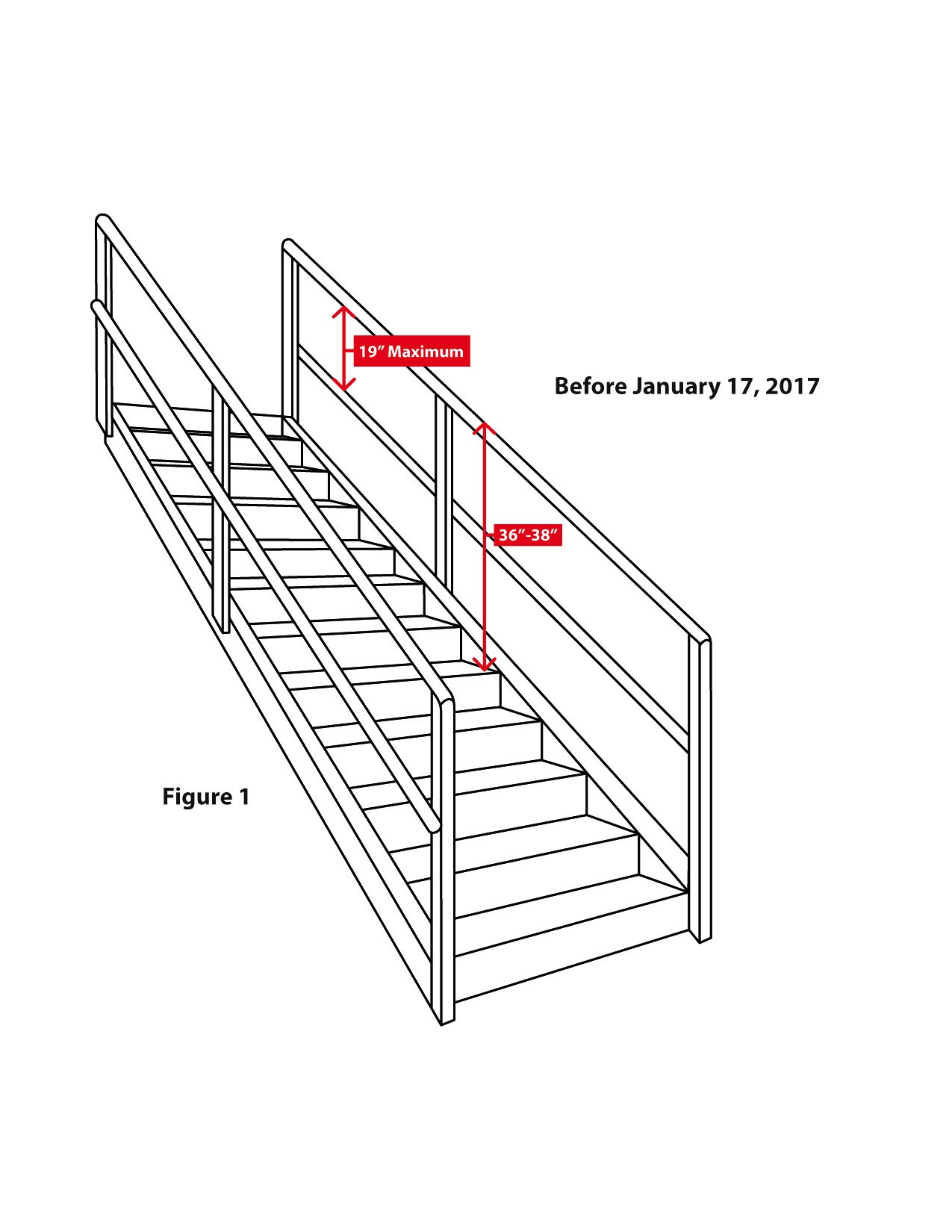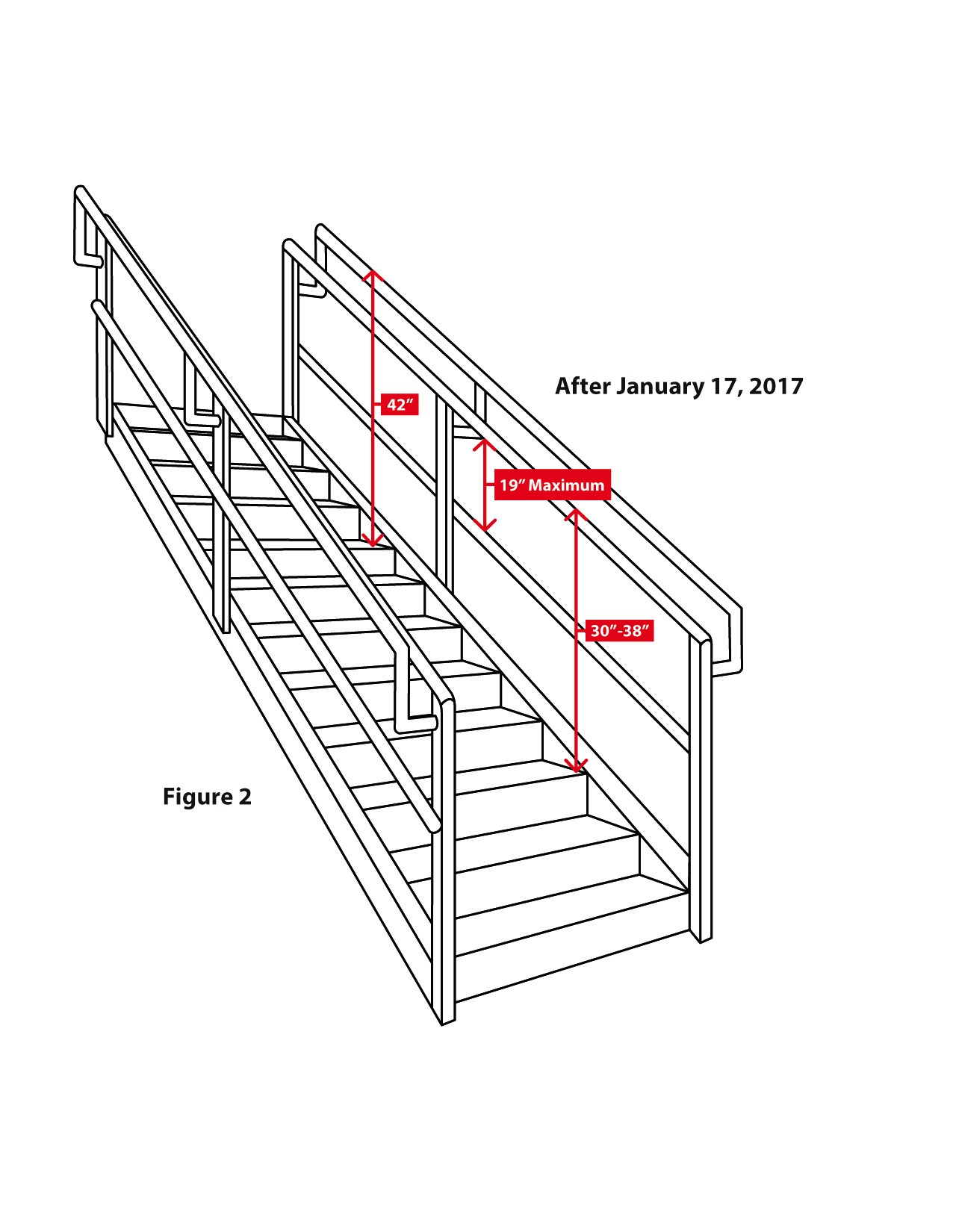Height of Handrail and Stair Rail Systems
STANDARD: 1910.29(f)(1)(i) ; 1910.29(f)(1)(ii)(B) ; 1910.29(f)(1)(iii)(A)
September 23, 2019
MEMORANDUM FOR: REGIONAL ADMINISTRATORS
STATE PLAN DESIGNEES
THROUGH: AMANDA EDENS
Acting Deputy Assistant Secretary
FROM: PATRICK J. KAPUST, Acting Director
Directorate of Enforcement Programs
SUBJECT: Enforcement of 29 CFR 1910.29(f)(1)(ii)(B) and 1910.29(f)(1)(iii)(A): Heights of Handrail and Stair Rail Systems
This memorandum replaces the memorandum issued on June 10, 2019, on this subject, and provides guidance to Compliance Safety and Health Officers for enforcing the handrail and stair rail system requirements at 29 CFR 1910.29(f)(1)(ii)(B) and 1910.29(f)(1)(iii)(A). OSHA has received a number of inquiries about these two OSHA standards since publishing the final Walking-Working Surfaces rule on November 18, 2016.
In accordance with §1910.29(f)(1)(ii)(B), the height of stair rail systems installed on or after January 17, 2017, must not be less than 42 inches (107 cm). Section 1910.29(f)(1)(iii)(A) allows the top rail of a stair rail system to serve as a handrail when the stair rail system is not less than 36 inches (91 cm) and not more than 38 inches (97 cm) in height.
The preamble to the final rule states:
…because the final rule requires that all stair rail systems installed on or after the effective date, which is January 17, 2017, must be at least 42 inches in height, final paragraph (f)(1)(iii)(A) is only applicable to stair rail systems installed before the effective date. (81 FR 82630).
Please note that §1910.29(f)(1)(iii)(A) applies only to stair rail systems installed prior to January 17, 2017.
To clarify the Agency’s original intent, OSHA will publish a Federal Register Notice (FRN). In the interim, the following guidance will apply:
Compliance Guidance
- The heights provided in §1910.29(f)(1)(ii)(A), §1910.29(f)(1)(iii)(A), and Figure D-13 apply only to stair rail systems installed before January 17, 2017. For these stair rail systems, the top rail may serve as a handrail, provided the top rail is 36 to 38 inches in height (as measured at the leading edge of the stair tread to the top surface of the top rail) and meets all other handrail requirements in §1910.29(f). See enclosed Figure 1 for an example of a stair rail system installed before January 17, 2017.
- For stair rail systems installed on or after January 17, 2017, the top rail and handrail must be separate. The top rail must be at least 42 inches in height (§1910.29(f)(1)(ii)(B)) and the handrail must be 30 to 38 inches in height (§1910.29(f)(1)(i)) (as measured at the leading edge of the stair tread to the top surface of the rail). See enclosed Figure 2 for an example of a stair rail system installed after January 17, 2017.
Enforcement Guidance
For stair rail systems installed on or after January 17, 2017, that meet §1910.29(f)(1)(iii)(A) instead of §§1910.29(f)(1)(i) and 1910.29(f)(1)(ii)(B), OSHA will not issue citations until the intent of the standards is clarified by a FRN. That is, heights of handrails and top rails of stair rail systems installed prior to any future FRN that meet either Figure 1 or 2 will be deemed compliant and will not need to be retrofitted.
If you have any questions regarding this policy, please contact Sanji Kanth at (202) 693-2135 or kanth.sanji@dol.gov.
Attachments

Figure 1. Depicts the height requirement when a handrail and top rail of a stair rail system are combined; it does not show compliance with all provisions of the standard.

Figure 2. Depicts the heights of the handrail and the top rail of a stair rail system, when the handrail and top rail are separate; it does not show compliance with all provisions of the standard.
OSHA requirements are set by statute, standards and regulations. Our interpretation letters explain these requirements and how they apply to particular circumstances, but they cannot create additional employer obligations. This letter constitutes OSHA’s interpretation of the requirements discussed. Note that our enforcement guidance may be affected by changes to OSHA rules. Also, from time to time we update our guidance in response to new information. To keep apprised of such developments, you can consult OSHA’s website at https://www.osha.gov.
See the HazComReady list of OSHA interpretations.


